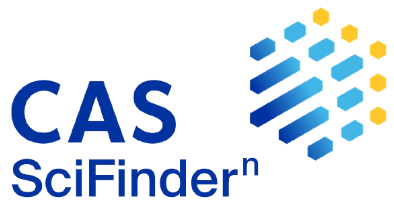The preparative synthetic approach to 4-(trifluoromethoxy)piperidine and 4-(trifluoromethoxymethyl)piperidine
DOI:
https://doi.org/10.24959/ophcj.21.222669Keywords:
fluorination; trifluoromethoxy group; xanthate; piperidine; protection groupAbstract
Aim. To develop a convenient synthetic approach for the preparation of multigram amounts of 4-(trifluoromethoxy)-piperidine and 4-(trifluoromethoxymethyl)piperidine – promising building blocks for medicinal chemistry.
Results and discussion. 4-(Trifluoromethoxy)piperidine (8.4 g) and 4-(trifluoromethoxymethyl)piperidine (12.9 g) were synthesized in 5 stages starting from 4-hydroxypiperidine (the overall yield 40 %) and 4-(hydroxymethyl)piperidine (the overall yield 13.5 %), respectively.
Experimental part. The first stage of the synthetic strategy was acylation of 4-hydroxypiperidine with benzoyl chloride. N-benzoyl-4-hydroxypiperidine obtained was transformed to N-benzoyl-4-(trifluoromethoxy)piperidine in two stages using the Hiyama method (the synthesis of the corresponding S-methyl xanthate with the subsequent desulfurization/fluorination using N-bromosuccinimide and Olah’s reagent). Then the N-benzoyl group was reduced to benzyl one, which was removed using 1-chloroethyl chloroformate. The similar approach was applied to the synthesis of 4-(trifluoromethoxymethyl)piperidine starting from 4-(hydroxymethyl)piperidine. The structure and composition of the compounds synthesized were confrmed by 1Н, 13C and 19F NMR spectroscopy,
mass-spectrometry and elemental analysis.
Conclusions. The synthetic approach developed is a convenient method for the multigram preparation of
4-(trifluoromethoxy)piperidine and 4-(trifluoromethoxymethyl)piperidine and can be used for the synthesis of other secondary amines containing the CF3O-group.
Key words: fluorination; trifluoromethoxy group; xanthate; piperidine; protection group
Downloads
References
- Haufe, G.; Leroux, F. R., Eds. Fluorine in Life Sciences: Pharmaceuticals, Medicinal Diagnostics, and Agrochemicals; Progress in Fluorine Science Series; Academic Press: San Diego, 2019; Vol. 4.
- Kirsch, P. Modern Fluoroorganic Chemistry: Synthesis, Reactivity, Applications, 2nd Ed.; Wiley-VCH: Weinheim, 2013.
- Gregory, L.; Armen, P.; Frederic, R. L. Trifluoromethyl Ethers and –Thioethers as Tools for Medicinal Chemistry and Drug Discovery. Curr. Top. Med. Chem. 2014, 14 (7), 941 – 951. http://dx.doi.org/10.2174/1568026614666140202210016.
- Liu, J.-B.; Xu, X.-H.; Qing, F.-L. Silver-Mediated Oxidative Trifluoromethylation of Alcohols to Alkyl Trifluoromethyl Ethers. Org. Lett. 2015, 17 (20), 5048 – 5051. https://doi.org/10.1021/acs.orglett.5b02522.
- Koller, R.; Stanek, K.; Stolz, D.; Aardoom, R.; Niedermann, K.; Togni, A. Zinc-Mediated Formation of Trifluoromethyl Ethers from Alcohols and Hypervalent Iodine Trifluoromethylation Reagents. Angew. Chem. Int. Ed. 2009, 48 (24), 4332 – 4336. https://doi.org/10.1002/anie.200900974.
- Umemoto, T.; Adachi, K.; Ishihara, S. CF3 Oxonium Salts, O-(Trifluoromethyl)dibenzofuranium Salts: In Situ Synthesis, Properties, and Application as a Real CF3+ Species Reagent. J. Org. Chem. 2007, 72 (18), 6905 – 6917. https://doi.org/10.1021/jo070896r.
- Shimizu, M.; Hiyama, T. Modern Synthetic Methods for Fluorine-Substituted Target Molecules. Angew. Chem. Int. Ed. 2005, 44 (2), 214 – 231. https://doi.org/10.1002/anie.200460441.
- Kondratov, I. S.; Logvinenko, I. G.; Tolmachova, N. A.; Morev, R. N.; Kliachyna, M. A.; Clausen, F.; Daniliuc, C. G.; Haufe, G. Synthesis and physical chemical properties of 2-amino-4-(trifluoromethoxy)butanoic acid – a CF3O-containing analogue of natural lipophilic amino acids. Org. Biomol. Chem. 2017, 15 (3), 672 – 679. https://doi.org/10.1039/C6OB02436J.
- Logvinenko, I. G.; Markushyna, Y.; Kondratov, I. S.; Vashchenko, B. V.; Kliachyna, M.; Tokaryeva, Y.; Pivnytska, V.; Grygorenko, O. O.; Haufe, G. Synthesis, physico-chemical properties and microsomal stability of compounds bearing aliphatic trifluoromethoxy group. J. Fluorine Chem. 2020, 231, 109461. https://doi.org/10.1016/j.jfluchem.2020.109461.
- Логвиненко, І. Г.; Кондратов, І. С. Синтез, фізико-хімічні властивості та мікросомальна стабільність аліфатичних трифторометоксивмісних сполук. В Біоактивні сполуки, нові речовини і матеріали; Вовк, А. І., Ред.; За матеріалами ХХХV Наукової конференції з біоорганічної хімії та нафтохімії (23 квітня 2020 р., м. Київ); Інтерсервіс: Київ, 2020; с 125 – 129.
- Bryan, M. C.; Chan B.; Hanan E.; Heffron T.; Purkey H.; Elliott R. L.; Heald R.; Knight J.; Lainchbury M.; Seward E. M. Aminopyrimidine compounds as inhibitors of T760M containing EGFR mutants. International patent WO2014081718, May 30, 2014.
- Chen, H. S.; Chu, Y.; Do, S.; Estrada, A.; Hu, B.; Kolesnikov, A.; Lin, X.; Lyssikatos, J. P.; Shore, D.; Verma, V.; Wang, L.; Wu, G.; Yuen, P.-W. Substituted heterocyclic sulfonamide compounds useful as TRPA1 modulators. International Patent WO2015052264, April 16, 2015.
- Yang, B. V.; O’Rourke, D.; Li, J. Mild and Selective Debenzylation of Tertiary Amines Using α-Chloroethyl Chloroformate. Synlett 1993, 1993 (03), 195 – 196. https://doi.org/10.1055/s-1993-22398.
- Chang, D.; Feiten, H.-J.; Engesser, K.-H.; van Beilen, J. B.; Witholt, B.; Li, Z. Practical Syntheses of N-Substituted 3-Hydroxyazetidines and 4-Hydroxypiperidines by Hydroxylation with Sphingomonas sp. HXN-200. Org. Lett. 2002, 4 (11), 1859 – 1862. https://doi.org/10.1021/ol025829s.
- Barbe, G.; Charette, A. B. Highly Chemoselective Metal-Free Reduction of Tertiary Amides. J. Am. Chem. Soc. 2008, 130 (1), 18 – 19. https://doi.org/10.1021/ja077463q.
Downloads
Published
How to Cite
Issue
Section
License
Copyright (c) 2021 National University of Pharmacy

This work is licensed under a Creative Commons Attribution 4.0 International License.
Authors publishing their works in the Journal of Organic and Pharmaceutical Chemistry agree with the following terms:
1. Authors retain copyright and grant the journal the right of the first publication of the work under Creative Commons Attribution License allowing everyone to distribute and re-use the published material if proper citation of the original publication is given.
2. Authors are able to enter into separate, additional contractual arrangements for the non-exclusive distribution of the journal’s published version of the work (e.g., post it to an institutional repository or publish it in a book) providing proper citation of the original publication.
3. Authors are permitted and encouraged to post their work online (e.g. in institutional repositories or on authors’ personal websites) prior to and during the submission process, as it can lead to productive exchanges, as well as earlier and greater citation of published work (see The Effect of Open Access).














